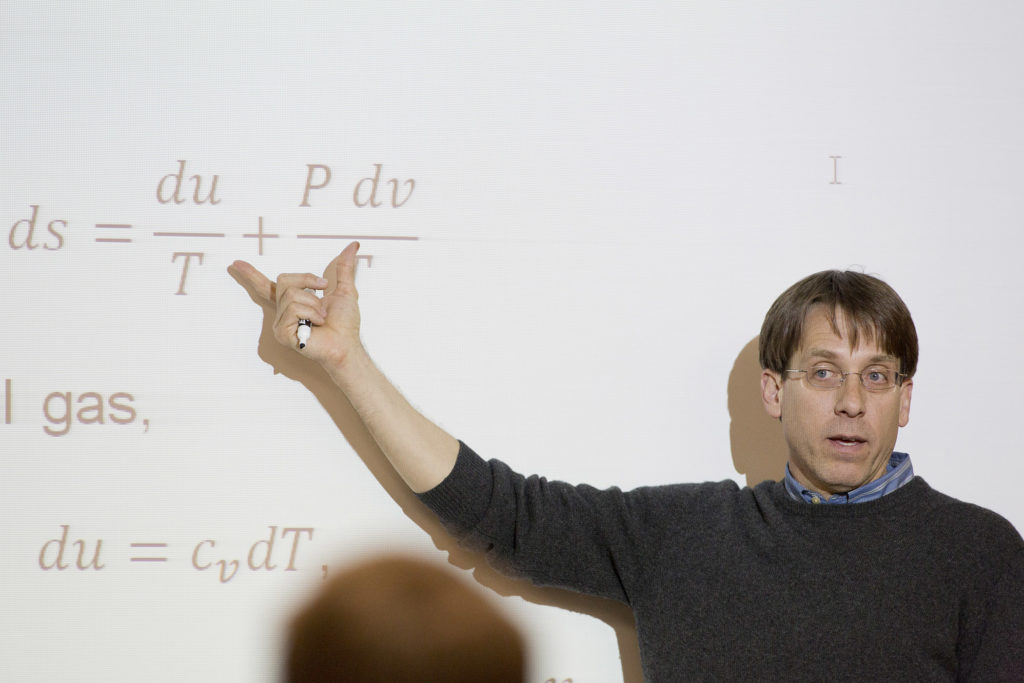Athens, Ga. – Through their metabolic cycle, humans and other organisms break down molecules that include carbon to temporarily obtain energy from the environment. New research from the University of Georgia takes this a step further, demonstrating that these organisms predictably affect the properties of the ecosystems around them.
The research, published in the Proceedings of the National Academy of Sciences, builds off the longstanding metabolic theory of ecology, which demonstrates how the body size and temperature of an organism predictably directs metabolic rates of organisms.
“Previous literature shows how an individual organism contributes to the environment,” said the study’s lead author, John Schramski. “This takes it a step further and shows that the metabolic activity of an ecosystem as measured by the residence time of carbon is the grand total of the metabolic activity of the organisms that comprise that ecosystem.
“Whereas metabolic theory worked with the individual organisms, in this case, we assembled them to represent an entire ecosystem. We found that metabolic theory is still predicting ecosystem level properties.”
The researchers’ new theory further explains the intimate connection between mankind and the environment and how they are tied together by the flow of carbon. The theory reveals that the amount of carbon in the environment has to do with the carbon of the individuals in it.
“We’re not separate from the environment,” said Schramski, an associate professor in the College of Engineering. “As an organism in the ecosystem, when you eat your food, you eat carbon. That carbon comes from the atmosphere through photosynthesis. Carbon then resides in each organism for a temporary period of time until it returns back into the environment to continue the cycle.”
Carbon has an important role in the way in which the metabolic pathways work.
“Metabolism is the process by which individual organisms acquire their share of carbon from the environment,” he said. “The carbon in your body was in the atmosphere around you. It’s the cycle of life.”
To test how multiple organisms change environmental properties, Schramski and his colleagues created numerical models of ecosystems. They varied parameters like organism size and body and environmental temperatures in terrestrial and marine ecosystems.
“We built the models as an assemblage of the individual organisms in an ecosystem,” Schramski said. “We wanted to see if the entire community or population of organisms behaved in a way we expected. With some properties, the ecosystem should be the sum of the individuals’ contributions the system is assembled from.”
Schramski measured the ecosystem models by looking at residence time, a measure that calculates the amount of time carbon remains within an organism or assemblage of organisms and is important to system stability. As he predicted, the ratio of residence time and total biomass and primary production matched depending on the carbon in each.
Body size and temperature influenced how long carbon resided in the ecosystem. In the model, residence time in ecosystems increased from 0.05 to 100 years as the size of organisms increased from tiny algae in oceans to large trees in forests.
“Residence time and whole ecosystem performance is heavily dependent upon body sizes of organisms and temperatures of organisms,” he said. “The theory speaks to the importance of our diversity and global temperature of operation.”
Schramski’s findings show that individuals, no matter how diverse they are, change the environment in which they live. His theory expands existing literature on how science understands the relationship between organisms and the environment.
He stresses that the research’s findings have implications for how people treat the environment.
“Our environment is only the organisms that live in it, therefore every organism plays a role,” Schramski said. “In some ways, our science doesn’t fully comprehend the total system connection yet.
“This relationship between organisms and the ecosystem is downright profound. The more I use what is essentially mechanical engineering or the study of energy transformations to study the ecosystem, the more awestruck I become with the precarious balance of the environment.”
Co-authors of the theory include Anthony I. Dell of Georg August University; John M. Grady and James H. Brown of the University of New Mexico; and Richard M. Sibly of the University of Reading. Brown’s portion of the research was supported in part by the National Science Foundation Macrosystems Biology Grant EF 1065836.
The paper is available at http://www.pnas.org/content/112/8/2617.full.pdf+html.
